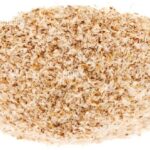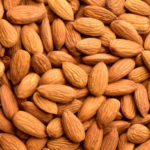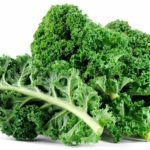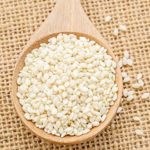Dear Readers, Give your skin what it needs. You have most likely heard of probiotics, the “good” bacteria found in fermented foods such as Greek yogurt and Kombucha. They improve bowel, digestion and skin health. Do you confuse them with prebiotics? And getting confused here is really easy. First, let’s look at the difference between probiotics and prebiotics, and then find out what effect they have on the skin.
Probiotics and Prebiotics: What is the Difference?
In 1995, scientists proposed the introduction of the term “prebiotic,” which will refer to substances that are the source of food for probiotics. Simply put, probiotics have a positive effect on the body, and prebiotics is their “feed”.
While probiotics are best defines as beneficial bacteria, prebiotics is a group of hard-to-digest carbohydrates found on a long list of foods like artichokes, asparagus, bananas, chicory root, garlic, onions, seaweed, and whole grains. They are rich in fiber and, since they do not directly absorb by the body, they pass through the digestive system, turning into food for microorganisms (probiotics) that are in the intestines.
Also read: Excellent Home Remedies for Silky and Smooth Hair Naturally
How do Probiotics and Prebiotics Work?
Not only does the intestine have a microbiome (a set of microorganisms) but the skin also has it. The microbiome design to maintain the protective barrier of the skin healthy and intact. What role does prebiotics play in this? They nourish “good bacteria” and prevent the colonization of pathogenic organisms.
This can lead to less inflammation and fewer skin problems like acne and even eczema. Prebiotics are most effective in combination with probiotics, as they contribute to the prosperity of beneficial bacteria that already live in your skin’s ecosystem.
Prebiotics are the precursors of probiotics and make the latter more stable. Ideally, if you look for a skin cleanser that contains these beneficial ingredients. With their help, you prepare the skin, eradicate harmful microorganisms and leave good ones, i.e. create an excellent base for further care procedures, Says cosmetologist Joshua Ross of SkinLab.
Where to Look for Prebiotics?
Today, brands such as Algenist, Elemis, and La Roche-Posay boldly use it as an ingredient in cosmetic lines. Thereby announcing the spread of fashion for prebiotics not only in health but also in skincare. You can find prebiotics in a variety of products, including facial cleansers, masks, mystes, moisturizers, serums, body lotions, creams, and deodorants. First of all, you should pay attention to such prebiotics as oligosaccharides, galactooligosaccharides, and fructooligosaccharides. All of them are sugars that nourish good bacteria. It’s best to choose skincare products that contain natural and organic ingredients. And avoid potentially harmful additives like parabens and phthalates.
Read about: For Body and Soul: Pilates its Main Advantages and Best Exercises Videos
Is it Worth Trying Cosmetics with Prebiotics?
We can immediately reassure you: prebiotics is a safe ingredient in skin care cosmetics and are suitable for girls with different skin types. It sounds good, be careful not to buy a fake. Only products with a good reputation are truly safe for skin health.
By the way, not all cosmetologists are ardent adherents of prebiotics in cosmetology. Their point of view is based on the fact that the effect of prebiotics, as components of cosmetic products, has not yet been fully studied. Therefore, think twice before spending money on expensive means with prebiotics, when there are proven, but more budget options.
Leave your comments on the topic.
probiotics and prebiotics














Hey Sazia,
We know very well yogurt is one of the prominent source of probiotics and it is associated with many health benefits including bone health and many more like high blood pressure.
Consuming probiotics on daily basis promotes digestive and immune health. Eventually, thanks for exploring these informative facts with us.
With best wishes,
Amar Kumar